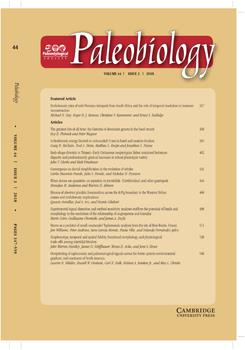Taphonomic factors may significantly alter faunal assemblages at varying scales. An exceptional record of late Holocene (<4000 yr old) mammal faunas establishes a firm baseline to investigate the effects of scale on taphonomy. Our sample contains 73 sites within four contiguous states (North Dakota, South Dakota, Iowa, and Illinois, USA) that transect a strong modern and late Holocene environmental gradient, the prairie-forest ecotone. We performed detrended correspondence (DCA) and non-metric multidimensional scaling (NMDS) analyses. Both DCA and NMDS analyses of the data sets produced virtually the same results, and both failed to reveal the known ecological gradient within each state. However, both DCA and NMDS analyses of the unfiltered multistate data set across the entire gradient clearly reflect an environmental, rather than taphonomic, signal. DCA tended to provide better separation of some clusters than did NMDS in most of the analyses. We conclude that a robust mammal data set collected across a strong environmental gradient will document species turnover without the removal of taphonomic factors. In other words, taphonomy exhibits varying scale-dependent effects.
How to translate text using browser tools
26 July 2018
Overprinting of taphonomic and paleoecological signals across the forest-prairie environmental gradient, mid-continent of North America
Lauren E. Milideo,
Russell W. Graham,
Carl R. Falk,
Holmes A. Semken,
Max L. Christie
ACCESS THE FULL ARTICLE
<
Previous Article
|

Paleobiology
Vol. 44 • No. 3
Summer 2018
Vol. 44 • No. 3
Summer 2018




